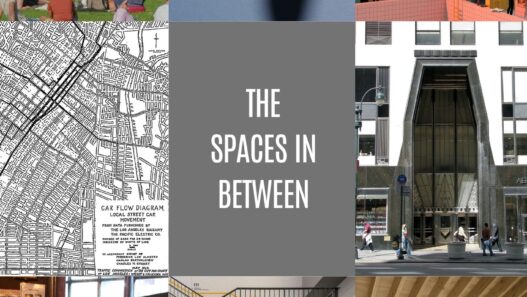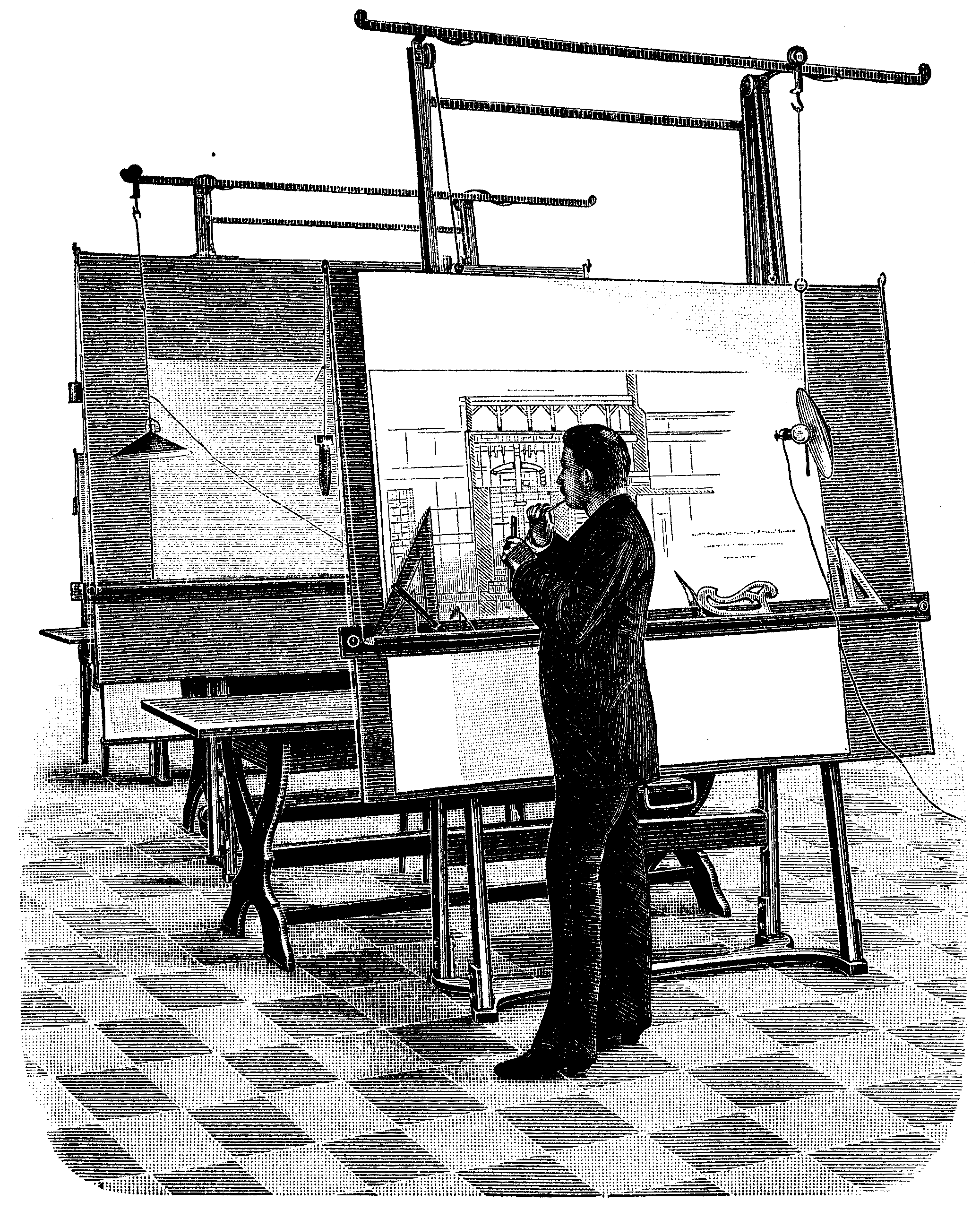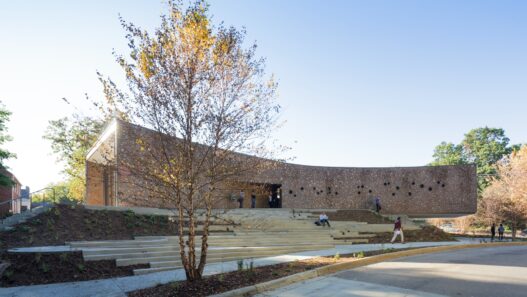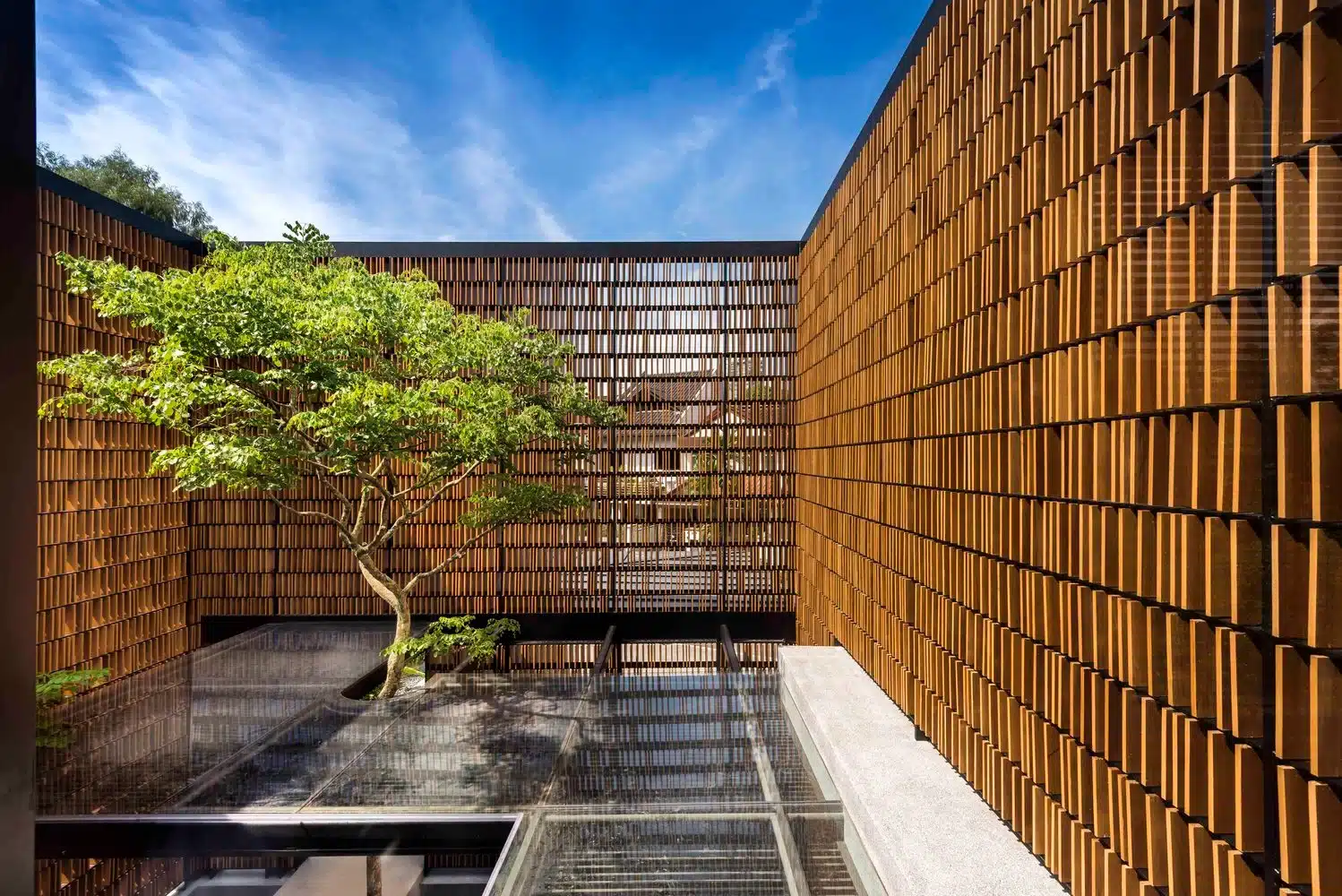The concept of smart homes has changed the way we think about living spaces. As technology continues to evolve, our homes are no longer just places that shelter us, but interactive environments that enhance our quality of life. Smart homes integrate advanced technologies to optimize comfort, safety and energy efficiency, creating a living experience that is both modern and intuitive. In this section, we will explore what smart homes are, their historical development, the importance of technology in architecture, current design trends and the purpose of this research.
Definition of Smart Homes
In essence, a smart home is a residence equipped with devices that connect to the internet, allowing users to monitor and control various systems remotely. These systems include lighting, heating, security and even appliances can all be managed via smartphones or voice-activated assistants. Imagine walking into your home and seeing the lights set to your preferred brightness, the thermostat set to the ideal temperature and your favorite music playing softly in the background – all without lifting a finger. This seamless integration of technology not only increases convenience, but also promotes a more personalized living experience.
Historical Context
The journey to the smart home began long before the advent of the internet. The first innovations can be traced back to the mid-20th century, when basic home automation systems began to emerge. These systems were primarily focused on increasing convenience, such as automatic lighting or simple security alarms. But in the late 1990s and early 2000s, with the proliferation of the internet and wireless technologies, smart home concepts began to take shape. The introduction of devices such as smart thermostats and security cameras marked an important turning point. Today we see an explosion of smart devices on the market, each designed to meet the different needs of homeowners and reflecting how technology has become an integral part of our living environments.
The Importance of Technology in Architecture
The integration of technology into architecture has ushered in a new era of design possibilities. Smart homes epitomize this evolution, where traditional architectural principles meet the latest innovations. Technology is improving functionality and efficiency, allowing architects to create spaces that not only look good but also work smarter. For example, advanced building materials can regulate temperature more effectively, while smart lighting systems can reduce energy consumption by adapting to natural daylight. Technology is also encouraging a greener lifestyle by enabling architects to design for sustainability with systems that monitor and manage energy use.
Overview of Contemporary Design Trends
Contemporary design trends in smart homes reflect a mix of aesthetics and functionality. For example, minimalism remains popular, emphasizing clean lines and uncluttered spaces that evoke a sense of calm. At the same time, the focus on sustainability encourages the use of environmentally friendly materials and energy-efficient systems. The integration of natural elements such as plants and natural light is also gaining traction, creating a harmonious balance between technology and nature. Furthermore, the rise of modular and flexible designs allows homeowners to adapt their spaces as their needs change, demonstrating how architectural innovation can address the dynamic nature of modern living.
Purpose of the Blog Post
The aim of this blog post is to delve deeper into the fascinating world of smart homes, exploring their impact on our daily lives and the architectural landscape. By understanding the definition of the technology, its historical context and its importance in modern architecture, we can appreciate the complex relationship between our living spaces and the innovations that shape them. This exploration aims to inspire readers to consider how smart home technology can enhance their own environments so that homes become not just places to live, but smart, responsive sanctuaries that enrich lifestyles.
Key Features of Smart Homes
As technology continues to evolve, our homes are becoming increasingly smarter, creating what we now call “smart homes”. These homes are transforming the way we live by integrating advanced technologies to provide convenience, efficiency and security. A smart home is not just about having devices; it is about creating a seamless environment that enhances our daily lives. In this research, we will explore the key features that define smart homes, including home automation systems, energy efficiency, security technologies, connectivity and user interface design.
Home Automation Systems
Home automation systems are the backbone of every smart home. These systems allow homeowners to control home functions remotely or automatically through a central interface. Imagine walking into your home and seeing the lights turn on, the thermostat set to your preferred temperature and your favorite music start playing – all without you lifting a finger. This level of convenience not only increases comfort, but also allows for more efficient management of household tasks.
Smart home automation can include a variety of devices such as smart lights, smart thermostats and automatic window shades. These devices often communicate with each other, creating a cohesive ecosystem. For example, a smart thermostat can learn your schedule and adjust the temperature accordingly, optimizing energy use throughout the day. This interconnectedness is made possible by various communication protocols that enable devices to work in harmony, providing a truly automated experience.
Energy Efficiency and Sustainability
One of the most intriguing aspects of smart homes is their ability to promote energy efficiency and sustainability. By integrating smart technology, homeowners can monitor and manage their energy consumption more effectively. Smart meters provide real-time data on energy usage, helping families identify and adjust their habits to save money on utility bills.
Moreover, smart homes can include energy-efficient appliances that use less power and water than traditional models. For example, smart refrigerators can track expiration dates and reduce food waste by suggesting recipes based on available ingredients. Solar panels integrated with smart technology can optimize energy production and use, enabling homeowners to make efficient use of renewable energy.
This commitment to sustainability is not only good for the environment; it also contributes to significant cost savings over time. As more people become aware of their carbon footprint, smart homes offer a practical solution for those who want to live more sustainably while enjoying modern comforts.
Security Technologies
In today’s world, security is a top concern for homeowners. Smart homes utilize advanced security technologies to provide peace of mind. These systems go beyond traditional locks and alarms to include features such as smart cameras, doorbell cameras and motion sensors that can be monitored in real time via smartphones.
For example, a smart security system can send alerts to your phone when unusual activity is detected, allowing you to take immediate action or alert authorities. Many systems also offer features such as facial recognition and two-way voice, allowing homeowners to communicate with visitors or delivery personnel directly through their devices. This level of security not only protects the home, but also fosters a sense of security for its occupants.
In addition, data encryption and secure connections are critical components of smart home security. With cyber threats on the rise, manufacturers are increasingly focused on protecting personal information and ensuring their security systems are resilient to hacking attempts.
Connectivity and IoT Integration
The Internet of Things (IoT) is the driving force behind the smart home revolution. IoT enables devices to connect to each other via the internet, allowing them to communicate and share data. In a smart home, this means that everything from your refrigerator to your security system can connect to each other, creating a network of devices that work together.
This connectivity enables a more personalized living experience. For example, smart lighting can adjust to the time of day or the presence of people in a room. Homeowners can control their devices from anywhere, whether they are at work or on vacation, providing unprecedented convenience and control.
What’s more, IoT integration is paving the way for innovative applications. For example, smart irrigation systems can analyze weather data to determine when to water plants, saving water and promoting healthy gardens. As IoT technology continues to evolve, we can expect even more groundbreaking applications that further improve our living environments.
User Interface and Experience Design
User interface and experience design play a crucial role in the effectiveness of smart home technologies. A well-designed interface makes it easy for users to interact with smart home systems. Whether through a mobile app, voice commands or a touchscreen panel, the goal is to create an intuitive experience that everyone can use.
For example, voice-controlled assistants like Amazon Alexa or Google Assistant are transforming the way we interact with our environments by allowing homeowners to effortlessly control their devices. The ability to simply ask for the lights to be turned on or the temperature to be adjusted makes smart homes accessible to everyone, regardless of technological expertise.
Moreover, an effective user experience design ensures that all systems are interconnected and provide easy-to-understand feedback. Notifications about energy usage, security alerts and system updates should be clear and actionable, enabling homeowners to make informed decisions about their living space.
The evolution of smart home technology is an exciting frontier that promises to enhance our lives in a variety of ways. As we embrace these innovations, the future of life will undoubtedly become more connected, efficient and secure, allowing us to focus on what really matters – our lives and relationships.
Architectural Considerations
Architecture is more than just the creation of buildings; it is a complex dance between art and science. Every decision made by architects affects how spaces are experienced, interacted with and ultimately evaluated. As we explore various architectural considerations, we will uncover layers of thinking towards designing spaces that are not only functional, but also resonate with their inhabitants and surroundings.
Designing for Flexibility
In an ever-changing world, flexibility in architectural design has become crucial. Buildings need to adapt to different uses over time, keeping pace with evolving needs and technologies. This approach goes beyond just the physical space; it captures the essence of how buildings function in our lives.
Designing for flexibility often starts with open floor plans that allow spaces to be easily reconfigured. For example, a community center designed with movable walls can transform from a large gathering space into smaller meeting rooms as needed. This adaptability not only maximizes the utility of the space, but also fosters a sense of community by encouraging a variety of activities.
Moreover, architects are increasingly taking into account the technologies of the future. A building that can easily integrate new systems such as smart technology or renewable energy solutions will remain relevant and efficient for years to come. This forward-thinking approach is vital for sustainability and ensures that buildings can evolve without requiring a complete overhaul.
Space Planning for Technology
As technology permeates every aspect of our lives, its integration into architectural design becomes crucial. From simple electrical outlets to complex networking solutions, space planning should accommodate the tools and systems that enhance our daily experiences.
In modern offices, for example, the layout often includes collaborative workspaces equipped with advanced technology that encourages teamwork and innovation. Flexible workstations with built-in charging stations and high-speed internet access are becoming standard, allowing employees to work in a way that suits them best.
Furthermore, considerations for future technology should be woven into the fabric of the design. Designing walls with wireless charging or using modular furniture that can adapt to technological updates keeps spaces functional and up-to-date.
Materials and Aesthetics
In architecture, the choice of materials plays a critical role in defining both the functionality and aesthetic appeal of a building. Materials are not just about durability; they send messages about sustainability, culture and the environment.
For example, the use of reclaimed wood not only provides a unique visual character, but also reflects a commitment to environmental responsibility. Similarly, the application of glazing can enhance the well-being of occupants by allowing natural light while creating an open, airy feel.
Aesthetics go beyond the visual, encompassing textures, colors and finishes that are in harmony with the surroundings. In urban settings, architects can choose materials that blend seamlessly with the historical context of the area, while in natural landscapes they can choose materials that are in harmony with the environment.
Acoustic and Environmental Factors
In the world of architecture, sound and the environment are often overlooked, but are crucial for creating comfortable spaces. Acoustic considerations ensure that noise levels are appropriate for the intended use of a space. For example, in a library sound-absorbing materials can help maintain a peaceful atmosphere, while in a concert hall the design should enhance sound quality for optimal auditory experiences.
Environmental factors also play an important role in architectural design. The orientation of buildings can maximize natural light while minimizing heat gain, leading to energy-efficient designs. The integration of green roofs and walls not only improves aesthetics, but also increases insulation and supports biodiversity.
In addition, architects are increasingly using biophilic design principles that connect building occupants with nature through elements such as natural lighting, plant life and outdoor views. This connection can significantly improve mental well-being and productivity.
Zoning and Regulatory Issues
Navigating the maze of zoning laws and regulations is a fundamental aspect of architectural practice. These rules dictate how land can be used and affect everything from building height to the types of activities allowed within a structure. Understanding these regulations is crucial for architects to create designs that are both innovative and harmonious.
Zoning laws can vary greatly from one place to another and often reflect the unique character and needs of a community. For example, residential areas may have stricter regulations to protect the character of neighborhoods, while commercial zones may encourage high-density developments.
Architects should work with local communities and policy makers to ensure that their designs comply with regulatory frameworks while also meeting the needs of the public. This collaborative process not only enhances the functionality of the built environment, but also fosters a sense of ownership and pride among residents.
In conclusion, architectural considerations encompass a wide range of factors that influence the final outcome of any project. By prioritizing flexibility, integrating technology, carefully selecting materials, considering acoustic and environmental impacts, and navigating regulatory landscapes, architects can create spaces that are not only functional, but also enriching and inspiring for all who live in them.
Case Studies on Innovative Smart Homes
Smart homes are revolutionizing the way we live, blending technology with design to create spaces that are not only comfortable but also efficient and sustainable. These innovations often come to life in remarkable case studies from around the world, showcasing the potential of smart technology to redefine our living environments. Here, we examine a few exemplary smart homes that highlight the integration of advanced technology, sustainability and human-centered design.
Case Study: The Edge, Amsterdam
The Edge in Amsterdam stands as a testament to cutting-edge architecture and technology. Built with sustainability at its core, this office building incorporates smart home concepts that can easily be transformed into residential living. The building has an innovative energy system that captures sunlight and uses it to generate electricity. Its smart design maximizes natural light, reducing the need for artificial lighting throughout the day.
Edge is equipped with a complex network of sensors that monitor everything from temperature to occupancy. This data helps optimize energy use, allowing heating, cooling and lighting to adjust to real-time needs. Residents or employees can control their environment through a smartphone app, personalizing their space to improve comfort and productivity.
This case study exemplifies how smart technology can deliver significant energy savings while promoting a sustainable lifestyle. The principles applied in The Edge can inspire future residential smart homes, making them more eco-friendly and user-centered.
Case Study: Villa V, Netherlands
Located in the Dutch countryside, Villa V is a remarkable example of how aesthetics and technology can harmonize beautifully. Designed by innovative architect Paul de Ruiter, this home is not only visually stunning; it is also a model of sustainability. The villa utilizes a unique geothermal heating and cooling system, ensuring that the temperature remains comfortable year-round without relying heavily on fossil fuels.
What sets Villa V apart is its adaptive technology. The house is equipped with smart glass that can change its opacity depending on the sunlight, providing privacy while maximizing natural lighting. Furthermore, the smart home system allows residents to control various aspects of the home, from heating to blinds, through a simple app.
This case study highlights how smart homes can blend seamlessly with their surroundings while offering residents the convenience of modern technology. Villa V serves as an inspiring model for those looking to integrate smart solutions in a harmonious and aesthetically pleasing way.
Case Study: The Glass House, Connecticut
Philip Johnson’s Glass House in Connecticut is a landmark of modern architecture and a fascinating case study in transparency and connection. Designed in 1949, this iconic structure redefined residential architecture with floor-to-ceiling glass walls that invite the surrounding landscape into the living space.
While not equipped with the technology we associate with modern smart homes, the Glass House embodies the essence of connectivity and openness that is at the heart of the smart home concept. The design encourages a relationship between indoors and outdoors, promoting a sense of place and harmony with nature.
In recent years, the retrofitting of this iconic structure with smart technology has been discussed. Imagine integrating climate control systems that adapt to changes in outdoor conditions while preserving the original aesthetics of the house. This case study reminds us that smart homes can also respect and celebrate architectural history and blend innovation with timeless design.
Case Study: Smart Home Project, California
The Smart Home Project in California represents a pioneering approach to residential living with a focus on integrating technology into everyday life. The project showcases a variety of smart home features, including voice-activated systems, security monitors and energy-efficient appliances.
One of the highlights of this project is its emphasis on user experience. Data collected from a variety of sensors is analyzed to enhance the living experience, allowing the system to learn residents’ preferences over time. This personalization transforms the home into a responsive environment that anticipates needs, whether it’s adjusting the lighting for a movie night or preparing the heating system for a chilly evening.
Moreover, the Smart Home Project is a model for sustainable living. Thanks to solar panels and smart grids, it minimizes energy consumption while promoting renewable resources. This case study shows how smart technology can create not just a home, but an ecosystem that supports a modern and sustainable lifestyle.
Case Study: EcoSmart House, Australia
The EcoSmart House in Australia is a shining example of how smart homes can prioritize sustainability without sacrificing comfort or style. Designed to be energy efficient, the house uses rainwater harvesting systems, solar panels and passive solar design techniques to minimize its ecological footprint.
One of the most important features of EcoSmart House is the advanced monitoring system that tracks energy use and water consumption in real time. This data enables residents to make informed decisions about their consumption habits and promotes a more sustainable lifestyle.
Furthermore, the integration of smart technology extends to home appliances and heating systems, all of which can be controlled remotely. This flexibility allows for efficient management of resources, ensuring that energy is used wisely and responsibly.
By exemplifying how smart technology can align with environmental awareness, EcoSmart House offers a blueprint for future homes that aim to balance modern conveniences with the urgent need for sustainability.
Through these different case studies, we can see the transformative potential of smart homes. They not only enhance our living experiences, but also pave the way for a more sustainable future. As technology continues to evolve, these innovations will likely become even more integrated into our daily lives and shape the homes of tomorrow.
Future Trends in Smart Home Architecture
As we step into an era defined by rapid technological advancement, the architectural landscape is being dramatically transformed. Smart homes, equipped with intelligent systems that enhance comfort, efficiency and safety, are becoming the central focus of modern design. The future of smart home architecture promises to blend the latest technology with sustainable practices to create spaces that not only meet our needs, but also contribute positively to the environment. This research examines several key trends shaping the future of smart home architecture, highlighting innovations and ideas that will redefine how we interact with our living spaces.
Advances in Artificial Intelligence and Machine Learning
Artificial intelligence and machine learning are at the forefront of smart home innovation. These technologies allow homes to learn and adapt to the behaviors and preferences of their residents. Imagine a home that understands your daily routine, automatically adjusting the thermostat to your typical wake-up time or dimming the lights as you settle in for a movie.
This level of personalization goes beyond mere convenience. AI can optimize energy use, reducing costs and environmental impacts. For example, intelligent systems can analyze patterns in energy consumption and recommend and even automate adjustments to maximize efficiency. Security is also being enhanced through AI-driven cameras and sensors that can distinguish between familiar faces and potential intruders, giving homeowners peace of mind.
Real-world applications of AI can already be seen in smart homes. Companies are developing systems that integrate with home devices, allowing voice commands and remote management via smartphones. These innovations not only improve the user experience, but also pave the way for more advanced applications in the future, making homes smarter and more intuitive.
Integration of Renewable Energy Sources
As the world increasingly prioritizes sustainability, integrating renewable energy sources into smart home architecture is becoming essential. Solar panels, wind turbines and energy storage systems are being designed as integral components of home design, not just add-ons. This shift allows homes to generate their own energy, reducing dependence on non-renewable resources and shrinking their carbon footprint.
Smart homes equipped with renewable energy solutions can intelligently manage energy production and consumption. For example, a solar-powered home can use the energy generated on sunny days to charge electric vehicles or appliances, while storing excess energy for use during peak times or cloudy days. This dynamic interplay not only improves energy efficiency, but also promotes resilience to energy scarcity.
Innovative designs are emerging that seamlessly incorporate these renewable solutions into architecture. Roofs can be built with solar tiles that blend aesthetics with functionality. As more homeowners realize the benefits of sustainable living, we can expect to see an increase in homes prioritizing renewable energy as a core element of their architectural design.
The Role of Big Data in Design
Big data is revolutionizing the way architects and designers approach smart homes. By analyzing vast amounts of data on occupant behavior, environmental factors and building performance, architects can create spaces that are not only functional but also tailored to the unique needs of occupants. This approach optimizes everything from layout to energy efficiency, leading to more informed design decisions.
Through data analytics, architects can predict how families will use spaces, making designs intuitive and efficient. For example, data can reveal peak usage times for different areas of a home, guiding decisions on the placement of outlets, lighting and even furniture. This level of insight enables homes to be designed based on actual usage patterns, improving livability.
Furthermore, big data supports ongoing monitoring of a home’s performance. Smart systems can collect data about energy consumption, air quality, and occupancy levels, providing homeowners with actionable insights to improve their living environment continuously. This feedback loop enables both homeowners and designers to make adjustments that enhance comfort and sustainability over time.
Biophilic Design and Smart Technology
Emphasizing the connection between humans and nature, biophilic design is becoming increasingly important in smart home architecture. By incorporating natural elements such as plants, natural light and water features, designers are creating spaces that promote well-being and enhance the overall living experience. Biophilic design can be much more effective when combined with smart technology.
Imagine a home where smart windows automatically adjust to maximize natural light while minimizing heat gain. Smart irrigation systems can respond to real-time weather data, allowing indoor gardens to flourish without wasting water. These integrations not only enhance aesthetic appeal, but also contribute to the health and well-being of residents.
A growing awareness of the mental health benefits associated with nature has pushed biophilic design to the forefront of architectural trends. Homes that prioritize green spaces and natural elements are increasingly in demand, and smart technology is making these environments easier to maintain, creating a harmonious blend of nature and innovation.
Predictions for Smart Home Developments
Looking ahead, the smart home landscape is poised for rapid evolution. As technology advances, we can expect to see homes that become increasingly autonomous, requiring less input from residents but still responding to their needs and preferences. Homes may soon be able to anticipate maintenance needs, alerting homeowners before problems arise.
Furthermore, the integration of augmented reality (AR) and virtual reality (VR) into the design process will allow homeowners to visualize their space in an immersive way before construction begins. This technology can enhance collaboration between architects and clients, ensuring that the final product is closely aligned with the homeowner’s vision.
The future of smart home architecture is undeniably exciting. As we continue to innovate and integrate new technologies, homes will become not only smarter, but also more sustainable, connected and responsive to the needs of their occupants. This evolution in design will redefine our relationship with our living spaces, making them not just places to live, but environments that enhance our quality of life.
Conclusion and Final Thoughts
Summary of Key Points
Reflecting on our journey through the evolving landscape of architecture and living spaces, several key points emerge. We explored how technology has reshaped our homes, making them smarter and more connected. Innovations such as smart thermostats, security systems and energy-efficient appliances have transformed our daily routines, increasing comfort and convenience. We also discussed the importance of sustainability in architecture and highlighted the need for eco-friendly materials and designs that minimize our environmental footprint. Integrating natural elements into our living spaces has been shown to enhance our overall well-being by creating a harmonious balance between indoor and outdoor environments.
The Impact of Smart Homes on Lifestyle
Smart homes are not just a trend; they represent a fundamental shift in the way we interact with our living spaces. Imagine waking up to the soft glow of your smart lighting that gradually brightens, mimicking a natural sunrise. This is just one example of how technology can enhance our everyday experiences. These homes give us unprecedented control over our environments, allowing us to adjust settings with a simple voice command or a tap on our smartphones. From adjusting the thermostat to securing our homes, the convenience of managing tasks remotely has dramatically changed the way we live. Families can spend more quality time together because mundane tasks can be automated or simplified.
Incentives for Sustainable Practices
In our quest for modernity, it is vital that we remember our responsibility to the planet. Sustainable practices are not just optional; they are essential for the future of architecture and life. By choosing energy-efficient appliances, harnessing solar energy and choosing sustainable materials, we can significantly reduce our carbon footprint. Communities around the world are increasingly adopting green building certifications and encouraging the use of reclaimed materials. These choices not only benefit the environment, but also create healthier living spaces for us. Embracing sustainability fosters a sense of responsibility and enables us to leave a better world for future generations.
The Future of Living Spaces
Looking ahead, the future of living spaces promises to be even more innovative and exciting. Architectural designs will likely continue to integrate the latest technology, creating homes that are responsive and adaptable to our needs. Concepts such as modular homes that can be easily expanded or reconfigured will address the changing nature of family dynamics. Furthermore, as urban areas become more crowded, we will see an increase in vertical gardens and green roofs, bringing nature back into our cities. The focus will also shift towards community-centered designs that encourage social interaction and shared spaces, reinforcing the importance of connectivity in our increasingly digital age.
As you reflect on these insights, consider how you can contribute to a more sustainable and connected future. Whether you make small changes to your home, support local green initiatives or simply educate yourself and others on the importance of eco-friendly living, every action counts. Engage with your community to promote sustainable practices and inspire those around you. Remember, the choices we make today shape the world of tomorrow. Let’s embrace the future of living spaces together, creating environments that are not only smart but also considerate of our planet.



















